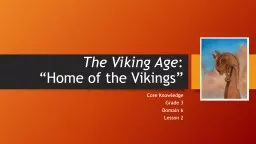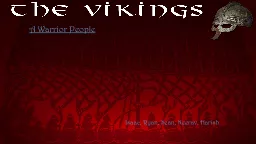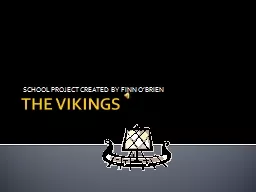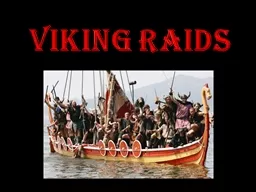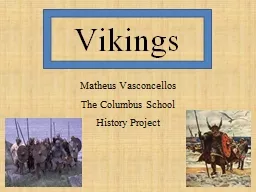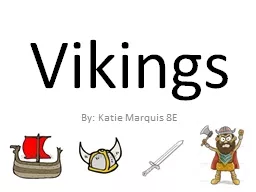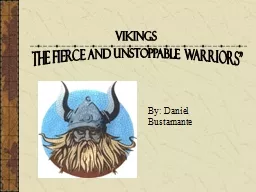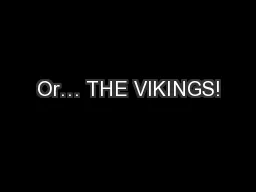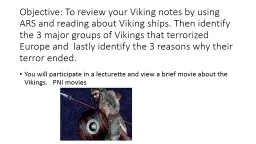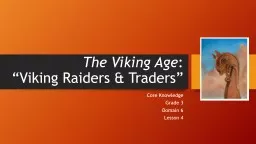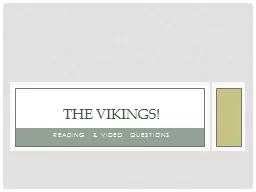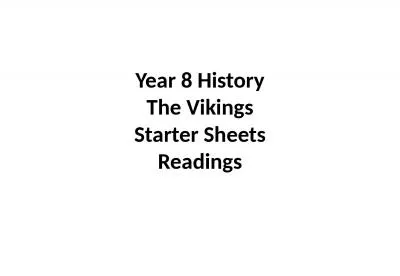PPT-The Viking Age : “Home of the Vikings” Core Knowledge
Author : trish-goza | Published Date : 2019-11-06
The Viking Age Home of the Vikings Core Knowledge Grade 3 Domain 6 Lesson 2 What Have We Already Learned Locate on the map and tell one or two facts about Scandinavia
Presentation Embed Code
Download Presentation
Download Presentation The PPT/PDF document "The Viking Age : “Home of the Viking..." is the property of its rightful owner. Permission is granted to download and print the materials on this website for personal, non-commercial use only, and to display it on your personal computer provided you do not modify the materials and that you retain all copyright notices contained in the materials. By downloading content from our website, you accept the terms of this agreement.
The Viking Age : “Home of the Vikings” Core Knowledge: Transcript
Download Rules Of Document
"The Viking Age : “Home of the Vikings” Core Knowledge"The content belongs to its owner. You may download and print it for personal use, without modification, and keep all copyright notices. By downloading, you agree to these terms.
Related Documents

